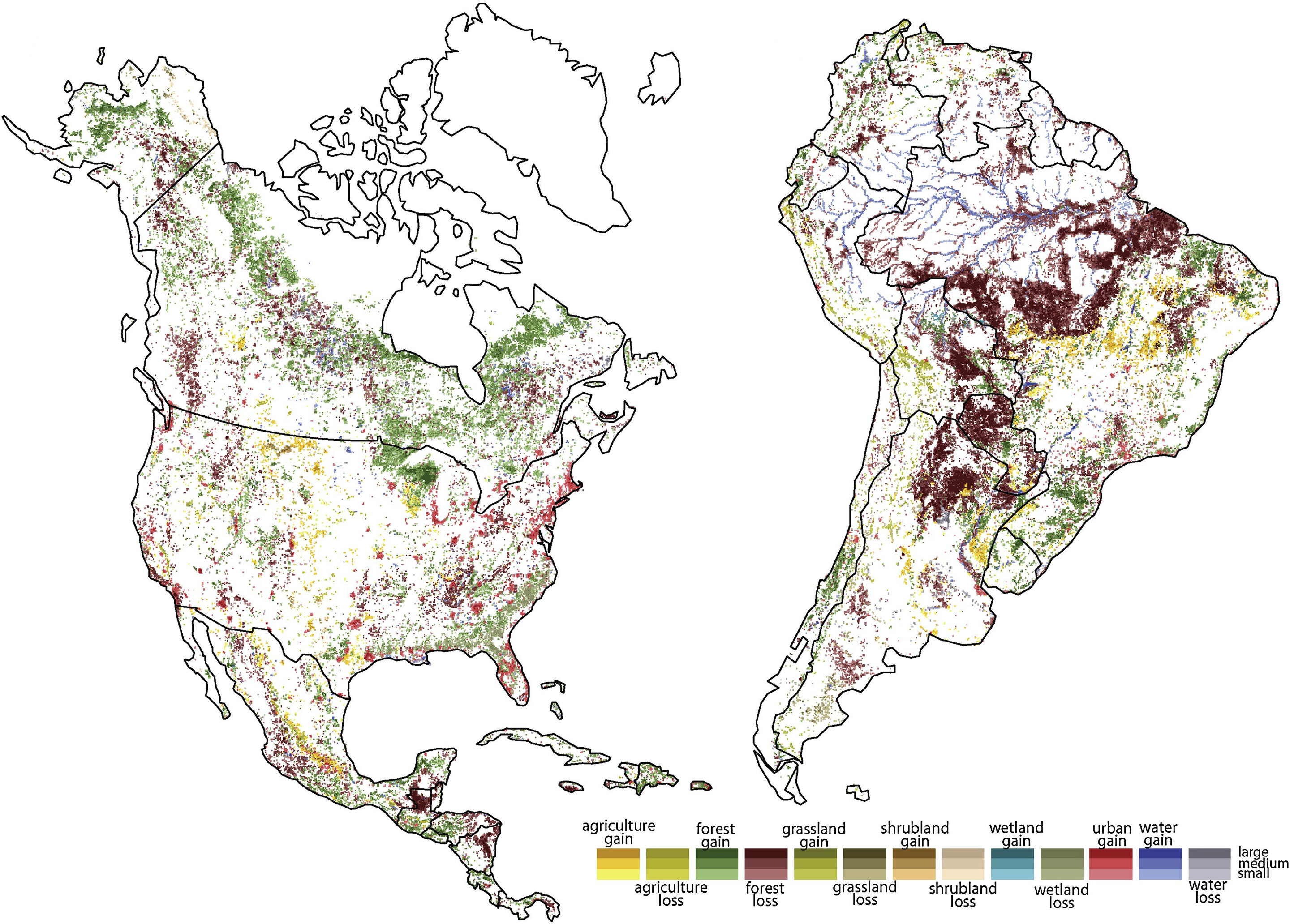Researchers at the University of Cincinnati (UoC) report finding a ‘tipping point’ for deforestation past which rapid forest loss occurs.
Landscapes are constantly in flux due to natural processes and human activity. The latter can either cause changes directly, think clear-cutting, or indirectly, such as climate change.

In order to better understand how landscapes react to direct causes of human-driven change, a team at the UoC tracked deforestation dynamics across the planet between 1992 and 2015. They found that, at least on a 9-kilometer-wide scale, deforestation occurs slowly until about half of the forest is gone — then the remaining trees disappear quickly. Mixed landscapes such as a forest together with agriculture are comparatively few, the authors explain, and tend to homogenize relatively quickly.
The findings provide new insight into landscape change dynamics, and the team hopes they will be used to guide conservation efforts in the future.
Don’t half-forest it
“I think it’s very intuitive. It corresponds to the different climatic zones,” says Professor Tomasz Stepinski, the paper’s corresponding author. “The Earth before people was certainly like that. You had forests and mountains and wetlands and deserts.”
“You would expect people would create more fragmentation, but as it turns out, people never stop. They convert the entire block on a large scale.”
In his previous research, Stepinski investigated the scale of landscape change, showing that around 22% of the Earth’s surface was measurably altered between 1992 and 2015. The single largest transition he found was from woodlands to agricultural fields. The same dataset was used for this study, which aimed to understand the dynamics of how one landscape changes into another. To this end, the team divided up the Earth’s landmasses into (roughly 1.8 million) 81-square-kilometer blocks. These blocks corresponded to 64 different combinations of landscape types.
All in all, the researchers report, some 15% of these blocks transitioned from predominantly one type to predominantly another between 1992 and 2015. Deforestation was the leading cause of man-made landscape change, they add.

Image credits Tomasz Stepinski/UC.
Next, it was time to get to the meat of the matter. Using a class of modeling algorithms known as the Monte Carlo (MC) methods, they looked at how likely different types of landscape changes are to occur over longer periods of time (centuries, in this case).
“The data we have covers 23 years. That’s a relatively short period of time. But from that we can calculate change in the future,” Stepinski said.
Landscapes, they found, tend to shift from one homogenous state to another. In other words, they tend to move towards (predominantly) the same state across all their surface, at least on the 81-sq-km scale the team used. The authors didn’t look into why they behave like this, but Stepinski says it’s likely that as human developments are introduced into an area — such as the construction of logging roads and drainage systems — subsequent change of the landscape becomes easier and happens faster.
“Planet Earth wants to be homogeneous. The land wants to be the same in all these patches. And when they start to change, they don’t stop until they convert everything into another homogeneous block,” he explains.
“I can only speculate [why] because that was not part of the study, but I would imagine two things are happening. If you are cutting forest, you have the infrastructure to finish it. It’s so much easier to cut the rest. Second, the forest is more vulnerable to change when there has been a disturbance.”
The findings largely align with what we know of landscape conservation so far. Wildlife managers will try to preserve larger intact blocks of a certain habitat or landscape as this improves their resilience to virtually every pressure, including climate change and invasive species. Large swathes of wildland are also difficult and expensive to exploit, reducing their attractiveness as sources of raw material or land. Small parcels are just easier to transform, for nature and humans both.
“I think it is interesting that this property applies both to natural and human landscapes,” said co-author Nowosad, a former UC postdoctoral researcher who now works as an assistant professor at the Adam Mickiewicz University in Poland. “This model can be used to help understand how landscapes evolved and are going to evolve in the future,” Nowosad said.
“It’s thought-provoking. My hope is that people will criticize it and come up with different ideas,” Stepinski adds.
The study helps us better understand long-term landscape change, Nowosad explains, adding that it would be interesting to see if the dynamic applies to other types of transitions since the study focused on shifts between forest and agricultural land.
The paper “Stochastic, Empirically Informed Model of Landscape Dynamics and Its Application to Deforestation Scenarios” has been published in the journal Geophysical Research Letters.


